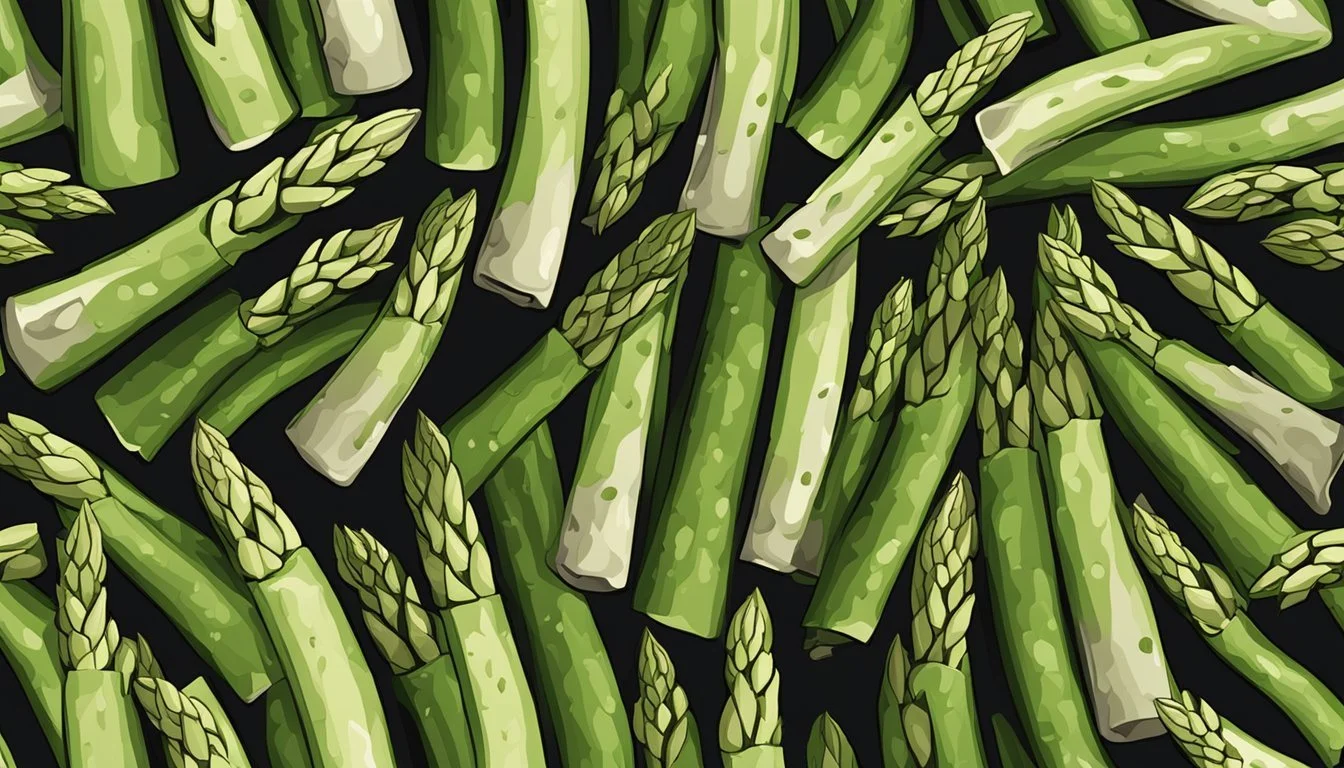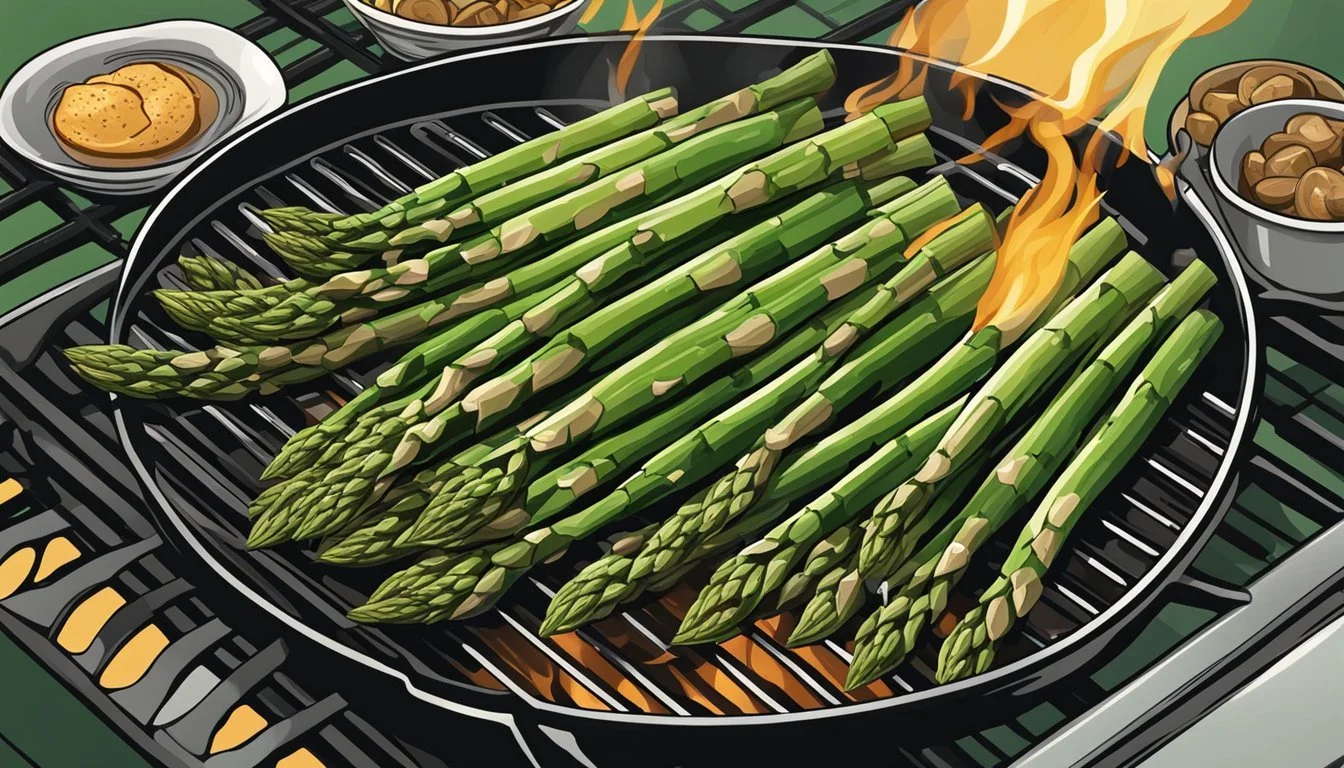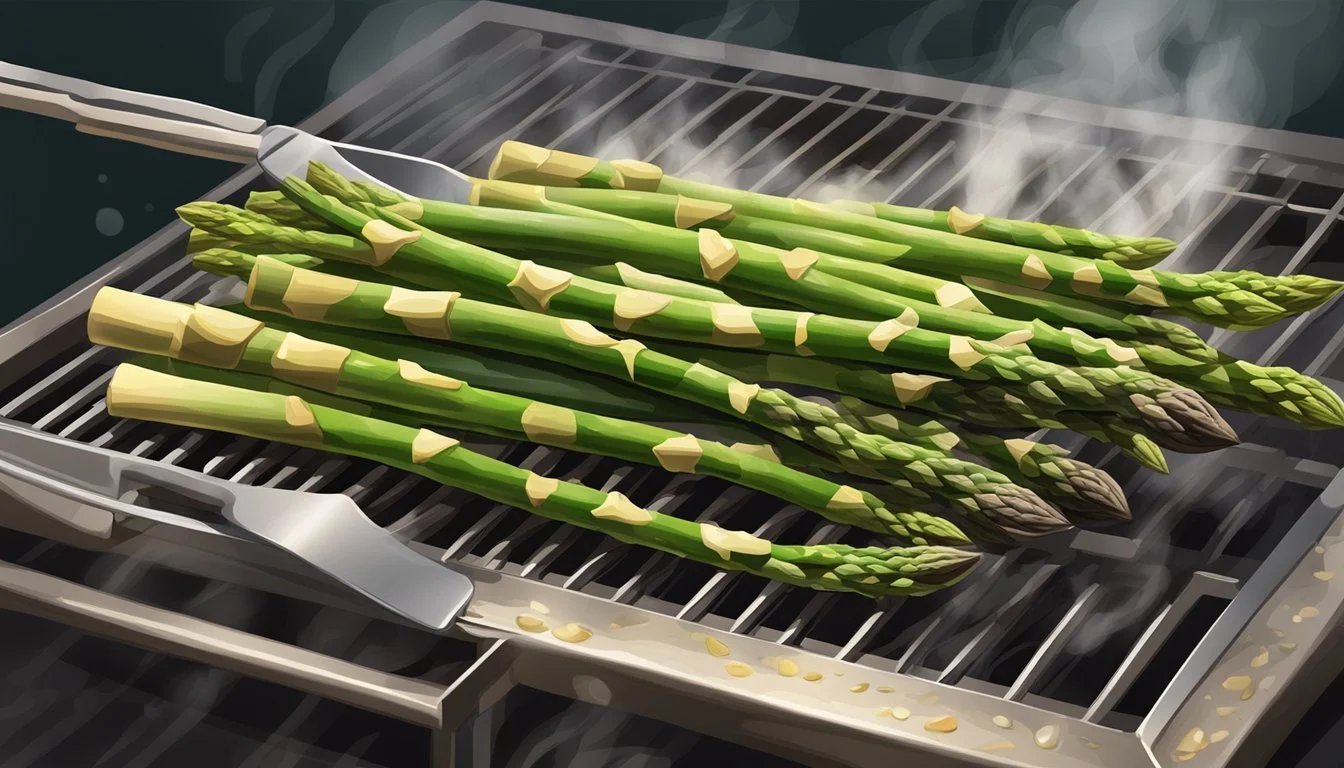How to Cook Asparagus on the Grill
Perfect Smoky Flavor and Tender Spears
Grilling asparagus transforms this versatile vegetable into a smoky, tender, and flavorful side dish. The high heat of the grill caramelizes the natural sugars in asparagus, enhancing its sweetness while adding a delightful char. Grilled asparagus requires minimal preparation and cooks quickly, making it an ideal choice for summer barbecues and outdoor gatherings.
Asparagus on the grill pairs well with a variety of main courses, from grilled steaks and chicken to fish and vegetarian options. Its crisp-tender texture and subtle smokiness complement many flavors, making it a versatile addition to any meal. Grilling also preserves the asparagus' nutrients, ensuring a healthy and delicious vegetable option for diners.
Seasoning grilled asparagus can be as simple as olive oil, salt, and pepper, allowing the vegetable's natural taste to shine through. For those seeking extra flavor, lemon juice, garlic, or Parmesan cheese can be added after grilling. This cooking method brings out the best in asparagus, creating a dish that's both easy to prepare and impressive to serve.
Selecting Asparagus for Grilling
When choosing asparagus for grilling, look for bright green stalks with tightly closed tips. Fresh spears should be firm and snap crisply when bent.
Thickness matters when grilling asparagus. Thick asparagus spears hold up better on the grill and are less likely to fall through the grates. They also tend to have a meatier texture when cooked.
Thin spears can work but require more attention to prevent overcooking. If using thin spears, consider using a grill basket or foil packet to prevent them from slipping through the grates.
Examine the woody ends of the asparagus. Fresh stalks will have a moist, greenish-white cut end. Avoid spears with dry, split, or excessively woody ends.
For even cooking, select asparagus spears of uniform thickness. This ensures all pieces will be done at the same time.
Store asparagus properly before grilling. Stand the spears upright in a container with about an inch of water, cover loosely with a plastic bag, and refrigerate.
Preparation of Asparagus
Proper preparation is key to achieving perfectly grilled asparagus. Trimming the stalks and seasoning them well enhances their flavor and texture on the grill.
Trimming
Start by washing the asparagus spears thoroughly and patting them dry. Examine each stalk and snap off the woody ends where they naturally break. This typically occurs about 1-2 inches from the bottom. For a neater appearance, use a sharp knife to cut the ends at the same point where they snapped.
Thicker asparagus spears may benefit from peeling the lower half of the stalk with a vegetable peeler. This ensures even cooking and improves tenderness. Remove any discolored or damaged areas on the spears.
Seasoning
Toss the trimmed asparagus with olive oil to coat them evenly. This helps the seasonings stick and prevents the spears from drying out on the grill. Use about 1-2 tablespoons of oil per pound of asparagus.
Sprinkle kosher salt and freshly ground black pepper over the oiled spears. For added flavor, incorporate minced garlic or fresh herbs like thyme or rosemary. A squeeze of lemon juice brightens the taste.
For variety, try different seasoning combinations. Grated Parmesan cheese, red pepper flakes, or a drizzle of balsamic vinegar can elevate the dish. Adjust the amount of seasonings to suit your taste preferences.
Preheating the Grill
Proper preheating is crucial for grilling asparagus to perfection. Start by turning on all burners to high heat on a gas grill. For charcoal grills, light the coals and allow them to burn until they're covered in gray ash.
Aim for a temperature between 400°F and 450°F for optimal asparagus grilling. This range provides enough heat to char the exterior while keeping the interior crisp-tender.
Allow the grill to preheat for 10-15 minutes with the lid closed. This ensures the grates are thoroughly heated, preventing sticking and creating beautiful grill marks.
While preheating, clean the grill grates with a stiff wire brush. This removes any leftover debris and creates a smooth cooking surface for the asparagus.
For direct heat grilling, leave all burners on high. If using a charcoal grill, spread the hot coals evenly across the bottom of the grill.
Once preheated, the grill is ready for your asparagus. The high heat will quickly cook the spears, preserving their fresh flavor and crisp texture.
Grilling Technique
Mastering the technique of grilling asparagus ensures perfectly cooked spears with delicious char and flavor. Proper placement, turning, and timing are key to achieving ideal doneness and attractive grill marks.
Placement on Grates
Position asparagus spears perpendicular to the grill grates. This prevents them from falling through and allows for even heat distribution. Place thicker stalks towards the center of the grill where it's hottest.
For smaller spears, use a grill basket or skewer them together for easier handling. Avoid overcrowding to ensure each spear cooks evenly.
Consider using a perforated grill pan for very thin asparagus. This allows for char while preventing spears from slipping through the grates.
Turning for Even Cooking
Turn asparagus spears every 2-3 minutes using tongs. This promotes even cooking and prevents one side from burning. Roll the spears gently to maintain their shape and integrity.
For larger batches, work in sections across the grill. Start turning spears at one end and move systematically to the other. This ensures all pieces receive equal attention and cook time.
Pay extra attention to thicker stalks, as they may require more frequent turning to cook through evenly.
Grill Marks and Doneness
Aim for distinct grill marks by leaving asparagus in place for 2-3 minutes before the first turn. Press gently with tongs to enhance contact with the grates.
Total cooking time ranges from 5-8 minutes, depending on spear thickness. Test for doneness by lifting a spear with tongs - it should bend slightly but still have some resistance.
Look for a bright green color with slight charring. The tips should be slightly crisp but not burnt. Remove asparagus promptly when done to prevent overcooking and maintain a crisp-tender texture.
Additional Grilling Methods
Asparagus can be grilled using several techniques beyond basic grate cooking. These methods offer unique flavors and textures while protecting the delicate spears.
Using Foil Packets
Foil packets provide a steaming environment for asparagus on the grill. Begin by tearing off a large piece of aluminum foil. Place trimmed asparagus spears in the center of the foil.
Drizzle the spears with olive oil and season with salt and pepper. Add lemon slices or garlic for extra flavor. Fold the foil over the asparagus and seal the edges tightly.
Grill the packet over medium-high heat for 8-10 minutes, flipping once halfway through. The asparagus will steam inside the packet, resulting in tender spears with a subtle smoky flavor.
Creating Asparagus Skewers
Skewers offer a fun presentation and easy handling for grilled asparagus. Soak wooden skewers in water for 30 minutes before use to prevent burning.
Thread 4-5 asparagus spears onto each skewer, piercing through the middle of the stalks. Brush the skewered asparagus with olive oil and season as desired.
Grill the skewers over medium-high heat for 3-4 minutes per side. The asparagus will develop char marks while maintaining a crisp-tender texture.
Wrapping with Bacon
Bacon-wrapped asparagus combines smoky, salty bacon with the vegetable's earthy flavor. Start by partially cooking thick-cut bacon slices until they're pliable but not crispy.
Wrap each asparagus spear with a bacon slice, securing the ends with toothpicks. Brush the wrapped spears lightly with olive oil.
Grill over medium heat for 6-8 minutes, turning occasionally. The bacon will crisp up and infuse the asparagus with its rich flavor. Serve immediately for the best texture and taste.
Serving and Presentation
Grilled asparagus deserves an appealing presentation to match its delicious flavor. A simple yet elegant serving platter provides an ideal canvas for showcasing the vibrant green spears.
Arrange the grilled asparagus in a single layer or in neat bundles on the platter. This allows guests to easily serve themselves and appreciate the appetizing grill marks.
Garnish the dish with lemon wedges placed around the edges. The bright yellow adds a pop of color and offers diners the option to squeeze fresh lemon juice over their asparagus.
For added flavor and visual appeal, sprinkle freshly grated Parmesan cheese over the asparagus just before serving. The white flecks of cheese contrast beautifully with the green stalks.
Consider adding a small dish of melted butter or olive oil on the side for those who prefer extra richness. A light drizzle of balsamic glaze can also enhance the presentation.
For a picture-perfect Instagram moment, style the platter with fresh herbs like parsley or basil. The additional greenery complements the asparagus and creates an eye-catching display.
Pairing with Other Dishes
Grilled asparagus pairs exceptionally well with a variety of main courses and side dishes. Its smoky flavor and tender-crisp texture complement both meat and seafood options.
Grilled steak and asparagus create a classic combination. The rich, savory flavors of the steak balance perfectly with the slightly charred asparagus spears.
For a lighter option, grilled salmon and asparagus make an excellent duo. The flaky fish and crisp vegetable offer contrasting textures and complementary flavors.
Grilled chicken also works well with asparagus. The mild taste of chicken allows the unique flavor of grilled asparagus to shine through.
For a creative twist, try steak and asparagus kabobs. Alternating chunks of beef and asparagus pieces on skewers creates an attractive and delicious dish.
Other vegetable side dishes that pair nicely with grilled asparagus include:
Roasted potatoes
Grilled corn on the cob
Sautéed mushrooms
Grilled bell peppers
These combinations offer a variety of colors, textures, and flavors to round out any meal featuring grilled asparagus.
Storing Leftovers
Leftover grilled asparagus can be stored in an airtight container in the refrigerator for 3-4 days. Allow the asparagus to cool completely before transferring it to the container.
For best results, wrap the asparagus spears loosely in a paper towel before placing them in the container. This helps absorb excess moisture and keeps the asparagus crisp.
To reheat leftovers, place the asparagus on a baking sheet and warm in a 350°F oven for 3-5 minutes. Alternatively, microwave on medium power for 30-60 seconds.
Grilled asparagus can also be enjoyed cold in salads or as a snack. Simply remove from the refrigerator and serve at room temperature.
Freeze leftover asparagus for longer storage:
Blanch spears in boiling water for 2-3 minutes
Plunge into ice water to stop cooking
Pat dry and freeze in a single layer on a baking sheet
Transfer to freezer bags once frozen solid
Frozen asparagus will keep for up to 8 months. Thaw in the refrigerator before reheating or using in recipes.
Tips for the Perfect Grilled Asparagus
Choose fresh asparagus with firm, bright green stalks and tight tips. Thicker spears work best for grilling, as they're less likely to overcook.
Trim the woody ends of the asparagus before grilling. This ensures tender, edible spears from top to bottom.
Toss the asparagus in olive oil and season with salt and pepper. This simple preparation allows the natural flavors to shine through.
Preheat the grill to medium-high heat. A hot grill creates those desirable char marks and enhances the smoky flavor.
Place asparagus spears perpendicular to the grill grates to prevent them from falling through. Alternatively, use a grill basket for easier handling.
Grill for 5-7 minutes, turning occasionally. The asparagus should be tender-crisp and lightly charred when done.
To add extra flavor, try squeezing fresh lemon juice over the grilled asparagus or sprinkling with grated Parmesan cheese before serving.
For a unique twist, wrap asparagus in foil packets with butter and herbs. This method steams the asparagus while infusing it with additional flavors.
Don't overcook the asparagus. It should maintain some crispness and a vibrant green color for the best texture and taste.
Alternative Cooking Methods
While grilling is a popular method for cooking asparagus, the oven offers a convenient alternative. This approach allows for year-round enjoyment of grilled-style asparagus, regardless of weather conditions or grill availability.
Grilling Asparagus in the Oven
Preheat the oven to 425°F (218°C). Trim the tough ends of the asparagus spears. Place the asparagus on a baking sheet and drizzle with olive oil. Sprinkle salt and pepper to taste.
Roast the asparagus for 12-15 minutes, turning once halfway through. The spears should be tender and lightly browned when done. For extra flavor, add minced garlic or grated Parmesan cheese before roasting.
To mimic the smoky flavor of grilled asparagus, try wrapping the spears in foil before placing them in the oven. This method traps steam and creates a similar effect to grilling in foil packets.
For a crispy texture, broil the asparagus for the last 2-3 minutes of cooking time. Watch closely to prevent burning. Serve immediately for the best flavor and texture.





